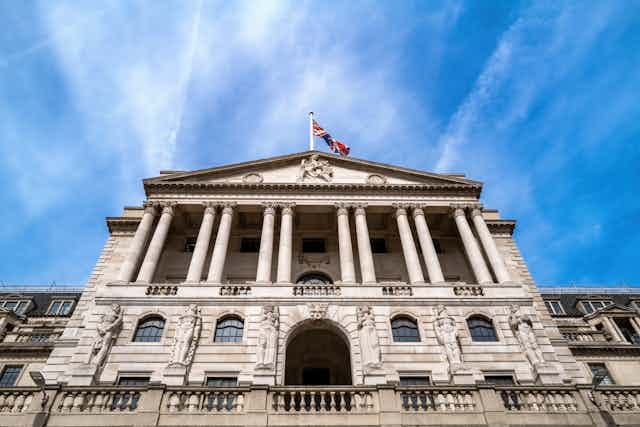Climate finance was a major focus at the recent COP28 summit, but one set of game-changing institutions remains largely missing in such conversations: central banks.
Central banks are public institutions, charged with maintaining economic stability through controlling the supply of money in an economy. These banks have enormous power to catalyse a more just, equitable and climate-stable future.
However, our recent research points out that their policies have been slowing down – rather than speeding up – transformative climate action. The problem is these banks focus on financial stability in the near term, which means propping up a status quo which promotes further climate instability. And that means they are making things more unstable in the long term.
Our research suggests that long-term stability cannot be achieved without first disrupting and transforming the existing financial system. One way to do this would be for central banks to use tools already available to them to trigger a short-term intentional disruption in order to redirect financial flows and create greater stability in the long-term – we call this “creative disruption”.
Short-term v long-term stability
Central banks generally try to keep the economy stable by controlling inflation through interest rates. With climate disruptions causing more and more instability every year, many central banks are starting to take the climate more seriously. Yet, when price stability is threatened by increasing inflation or when the overall financial stability is questioned by a looming financial crisis, central banks quickly forget about the climate.
For example, recent aggressive increases in interest rates have disproportionately hit the renewable energy sector and made it harder for people and governments to raise money for other measures that would help cut emissions or adapt to climate change. From a long-term perspective and from a climate justice lens, this is counterproductive.

To maintain short-term economic stability when COVID hit, central banks around the world quickly lent money to commercial banks in a variety of ways – even at negative interest rates. But no strings were attached, so banks lent this money to the fossil fuel industry and other wealthy corporate interests, among others.
During the pandemic many central banks also increased the money supply, in a process called quantitative easing, to stimulate the economy, and some of this money ended up in the pockets of carbon intensive industries. These efforts to stabilise financial markets reinforced and exacerbated huge inequities in wealth and power, and were a missed opportunity to increase support for a green economy.
Central banking, climate-justice style
That’s why in our latest research we analysed central banks from the lens of climate justice. Climate justice is an approach to climate action that goes beyond a narrow focus on decarbonisation and emissions and focuses on social change and economic equity as a way to make people less vulnerable to climate change. This means restructuring the financial system to work for the benefit of all people rather than just the top 1%.
So instead of stabilising markets by supporting corporate interests and the financial sector in the short-term, we suggest that central banks need to start prioritising long-term stability. An intentional short-term “creative disruption” would reverse established financial flows and would start funnelling investments towards the most vulnerable.

For example, central banks could use their power to create money to help local governments finance ambitious climate infrastructure projects or directly support community-oriented public investment programmes.
Rather than continuing to focus narrowly on inflation to determine economy-wide interest rates, central banks could create different interest rates for different kinds of investments – establishing high interest rates for carbon-intensive activities and low or zero-interest rates for renewable energy. The Bank of Japan is one of a few central banks that have already started experimenting with such schemes.
Central banks can also create zero or negative-interest rates for climate justice investments. Imagine households could insulate homes, install heat pumps and solar panels – and get paid for it. And the most vulnerable communities should be served first, not last. If central banks can use negative interest rates to save banks during the COVID crisis, they surely can use such tools to save people and the planet in the climate crisis. Innovations like this could transform the financial landscape, and reshape the financial injustices that dominate today. And there is much more central banks can do.
Central banks have the power and the tools to trigger a rapid transformation towards a more just, fossil-fuel free future at a global scale. Instead of continuing to use their power to accelerate climate chaos, central banks could catalyse a shift toward a more equitable financial system. Going forward, the transformative role of central banks needs to be at the top of the climate policy agenda.

Don’t have time to read about climate change as much as you’d like?
Get a weekly roundup in your inbox instead. Every Wednesday, The Conversation’s environment editor writes Imagine, a short email that goes a little deeper into just one climate issue. Join the 30,000+ readers who’ve subscribed so far.

